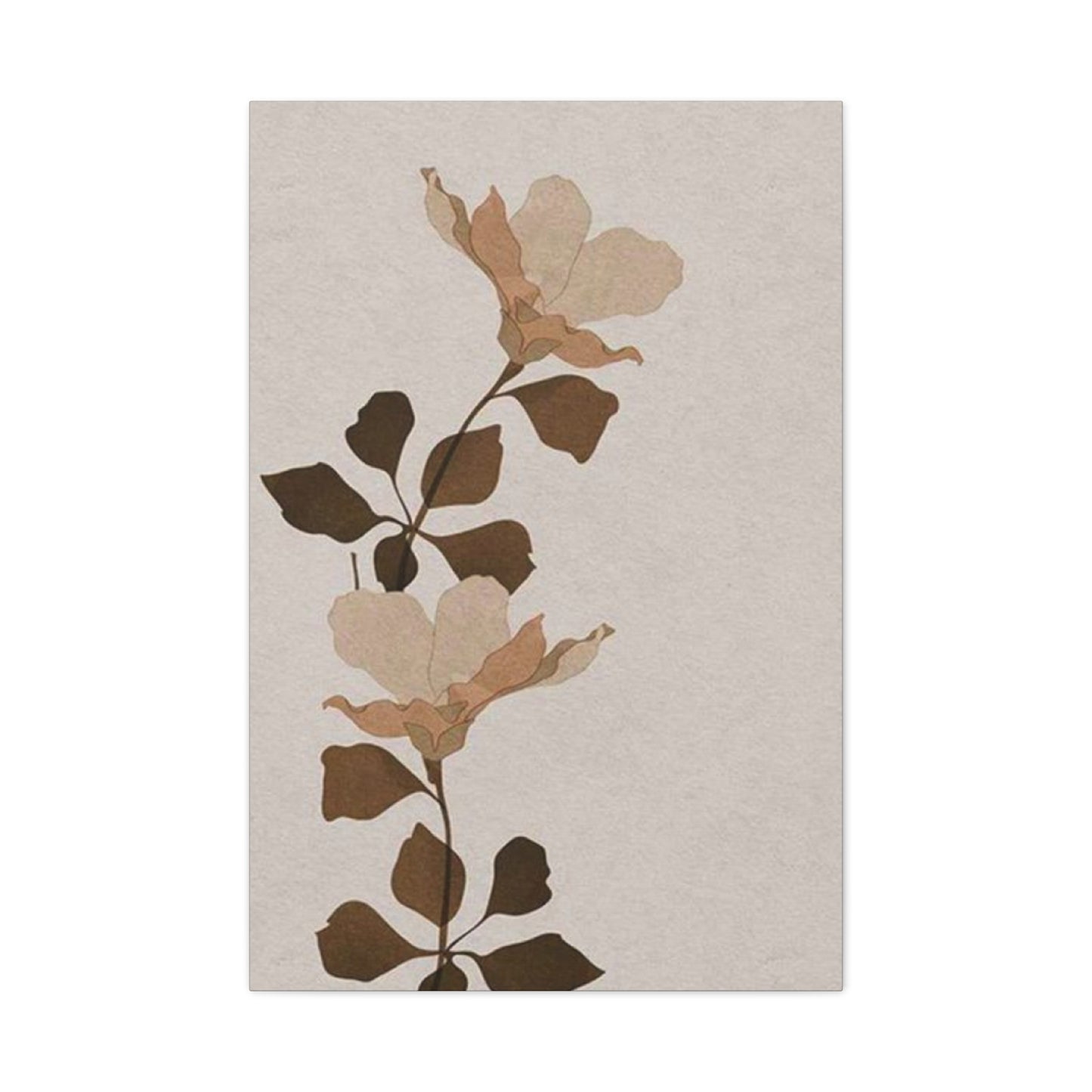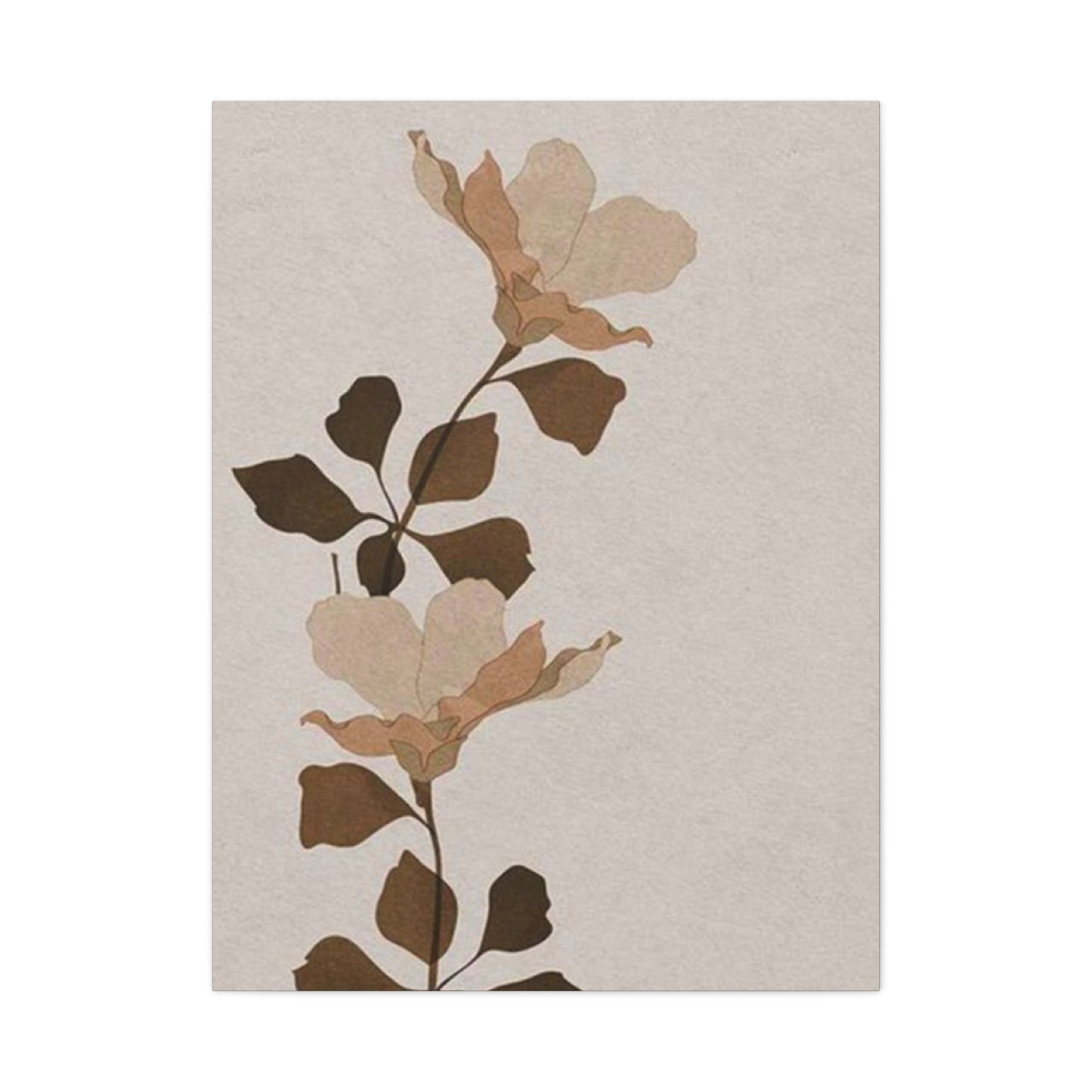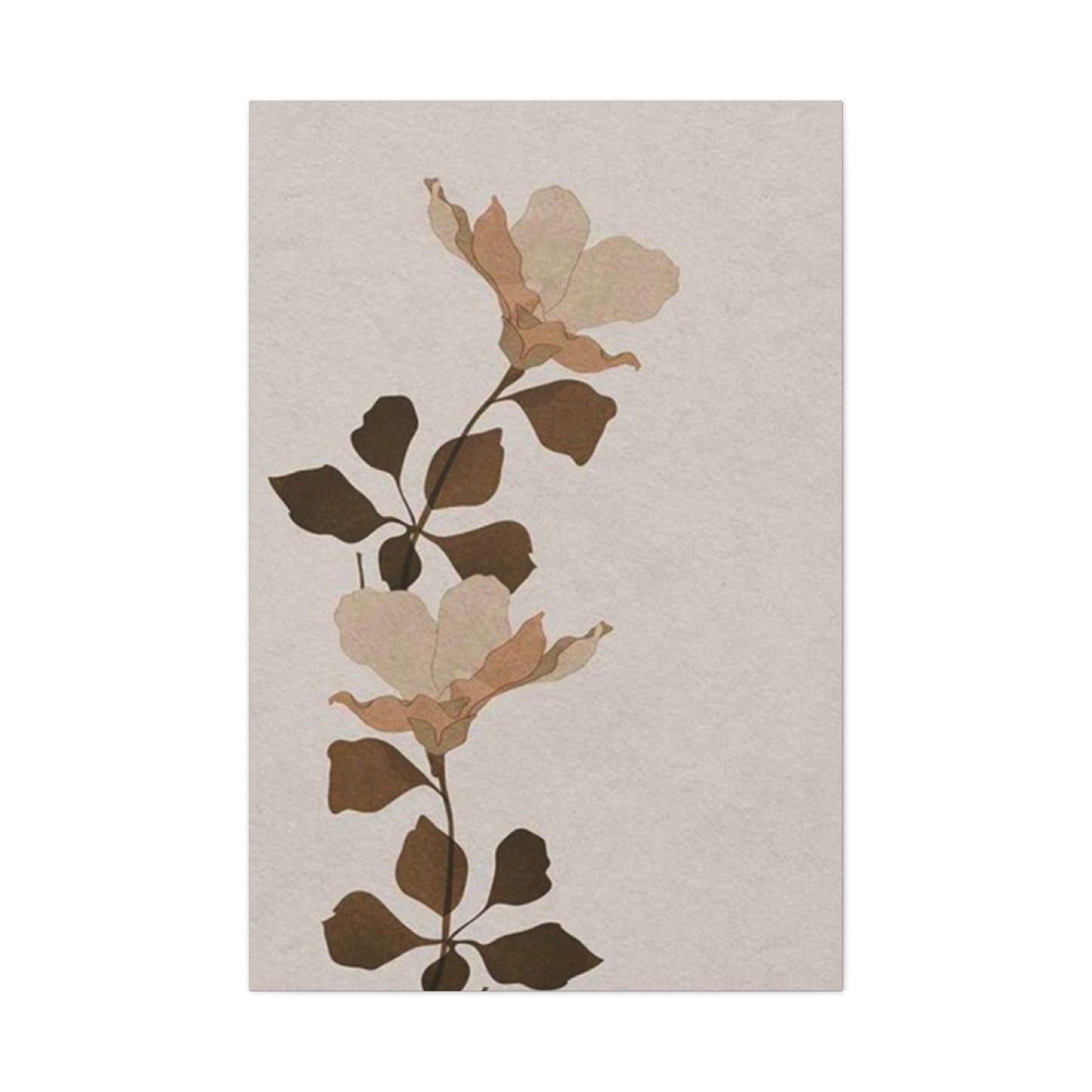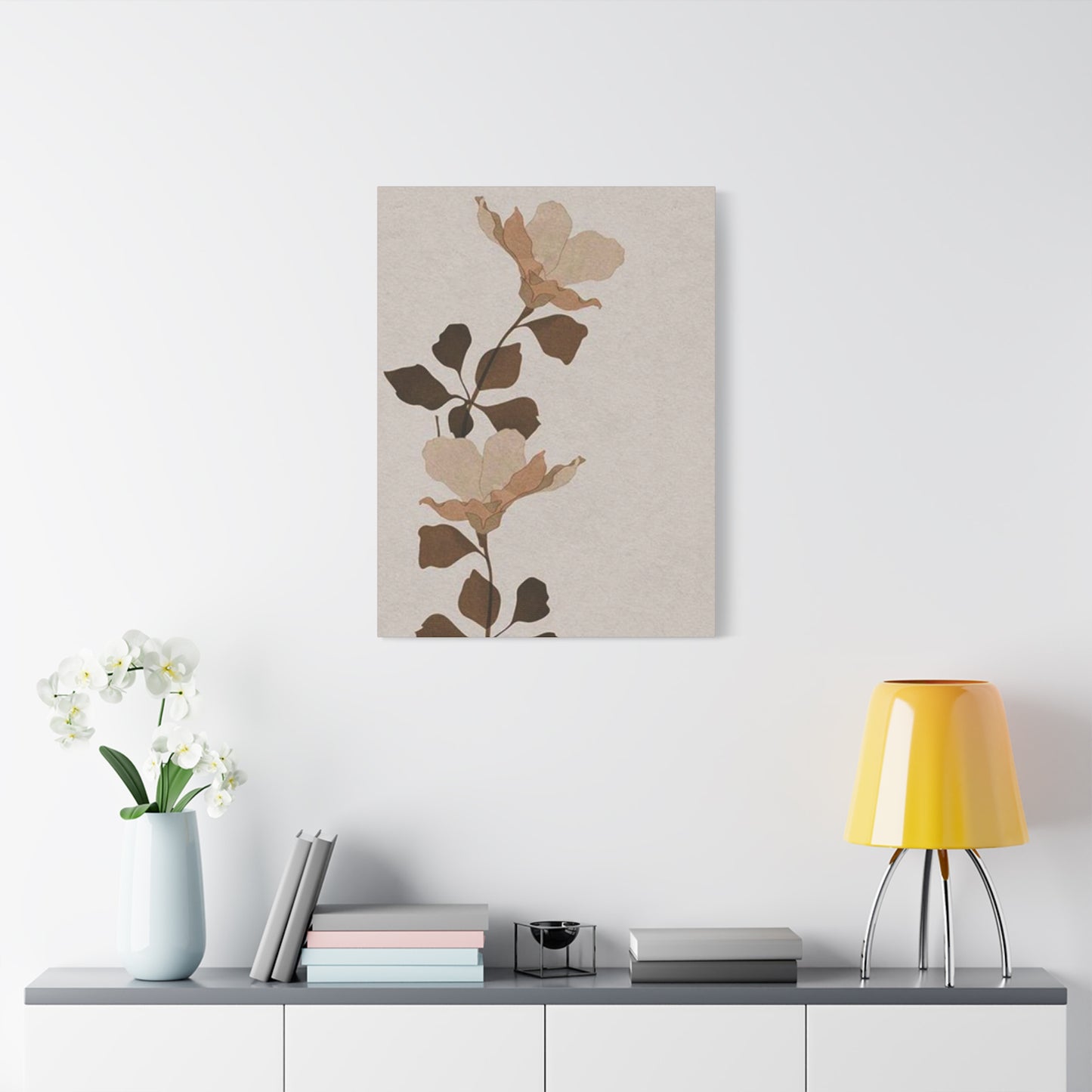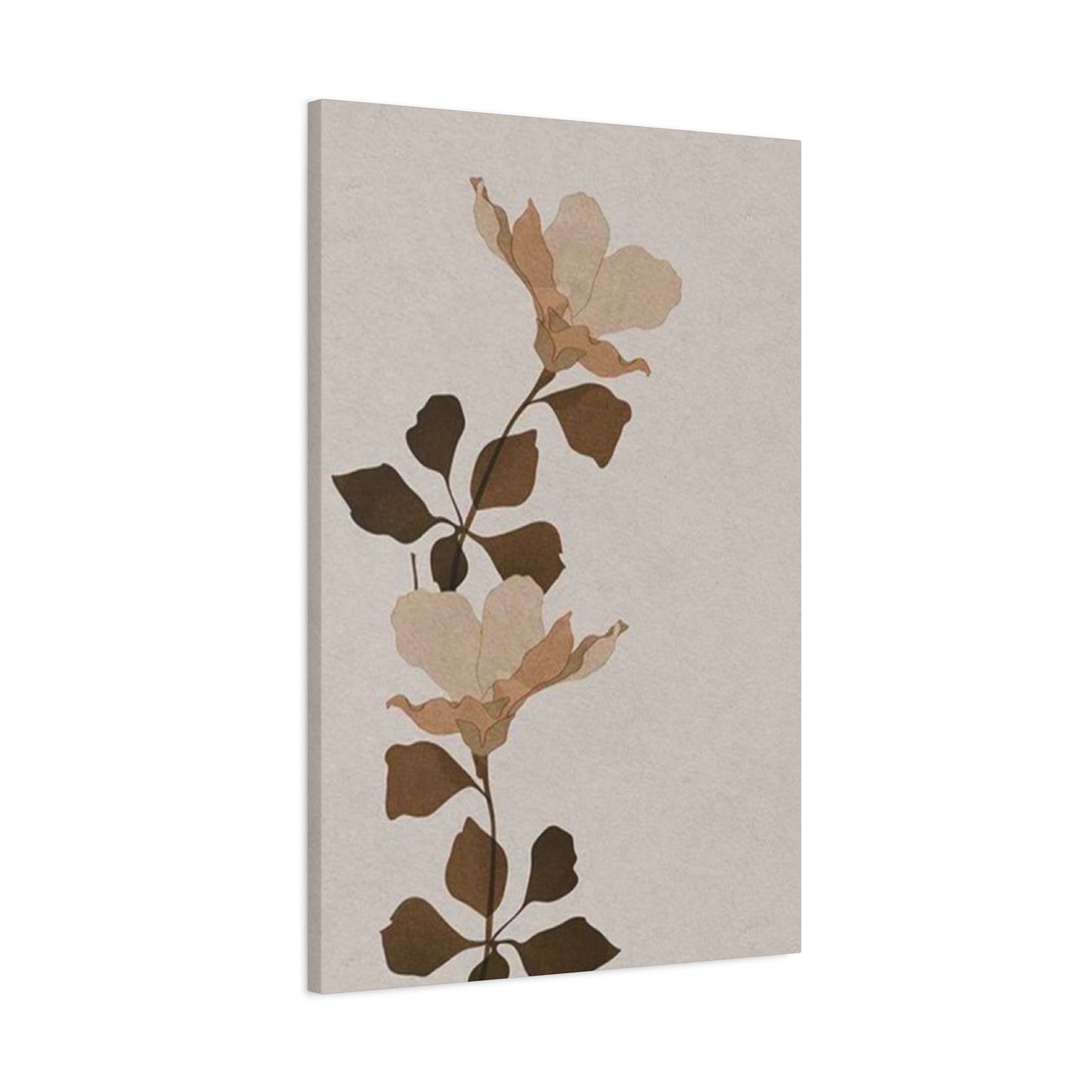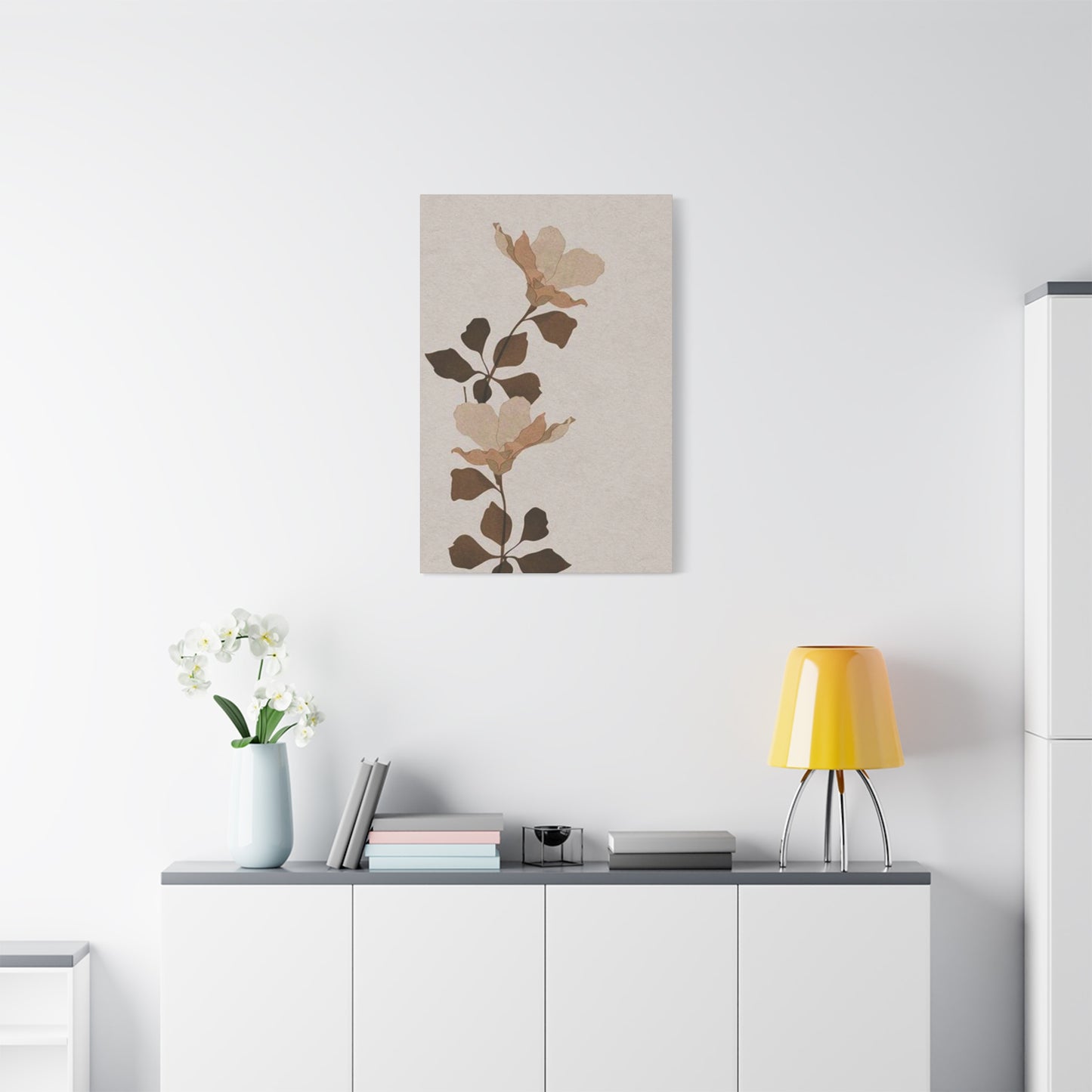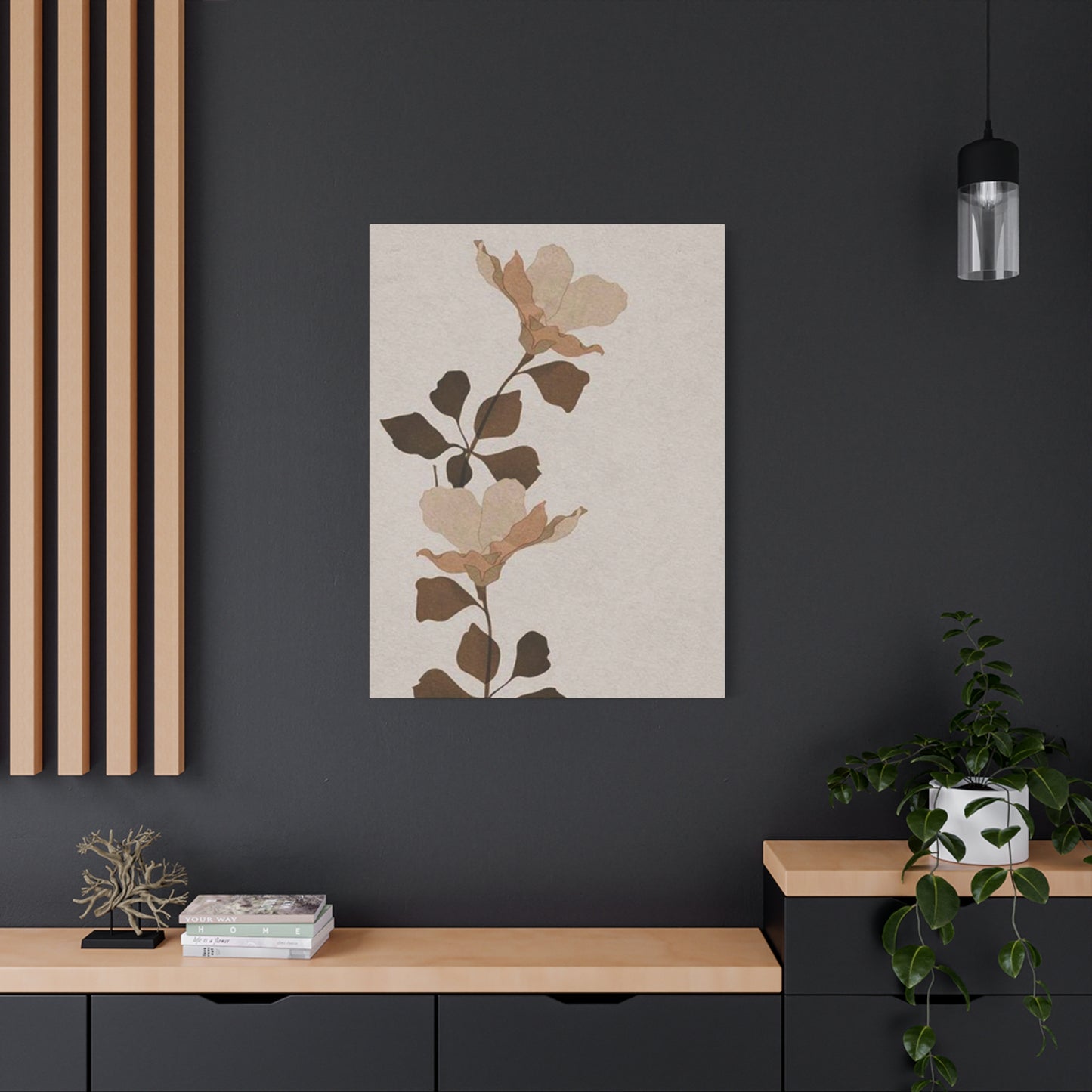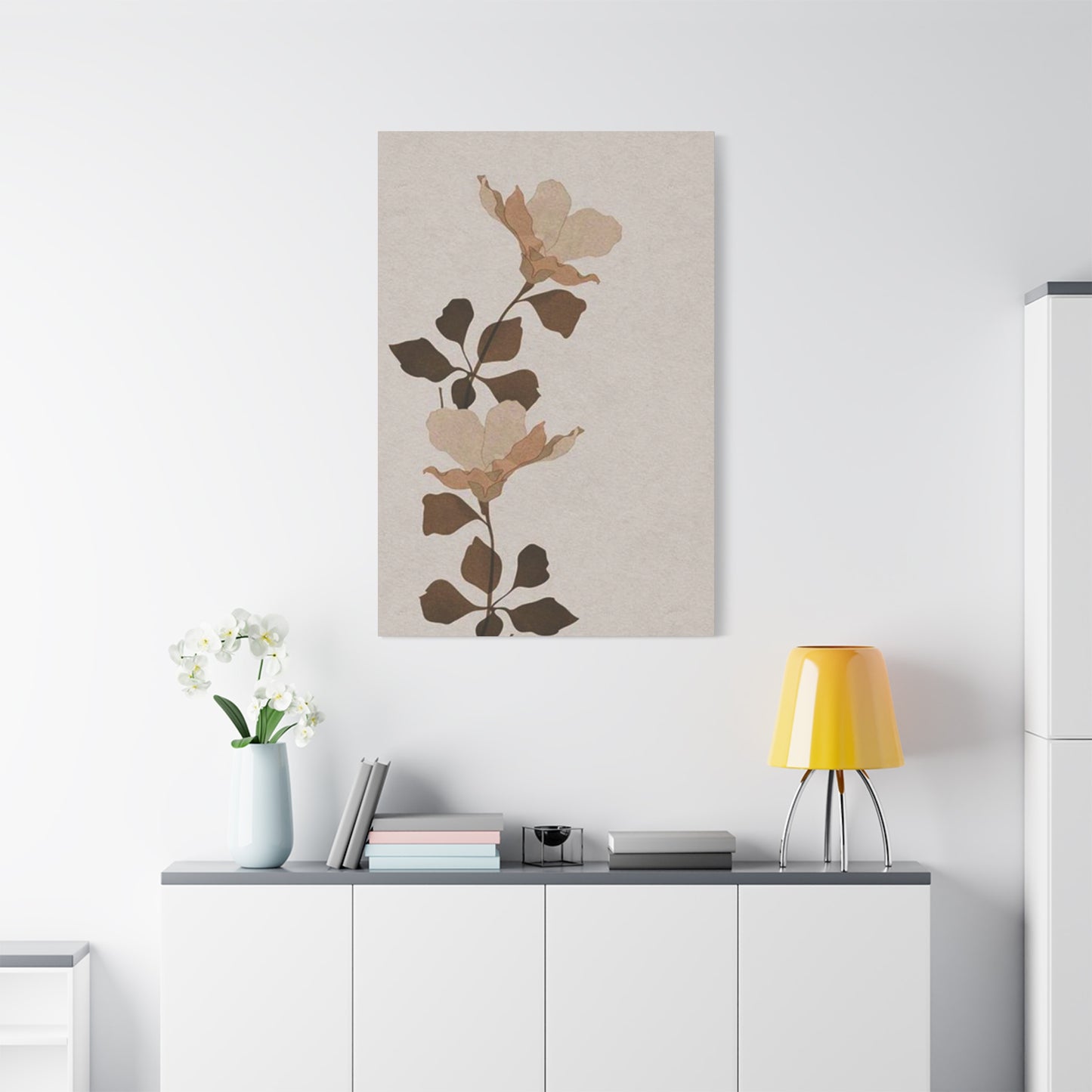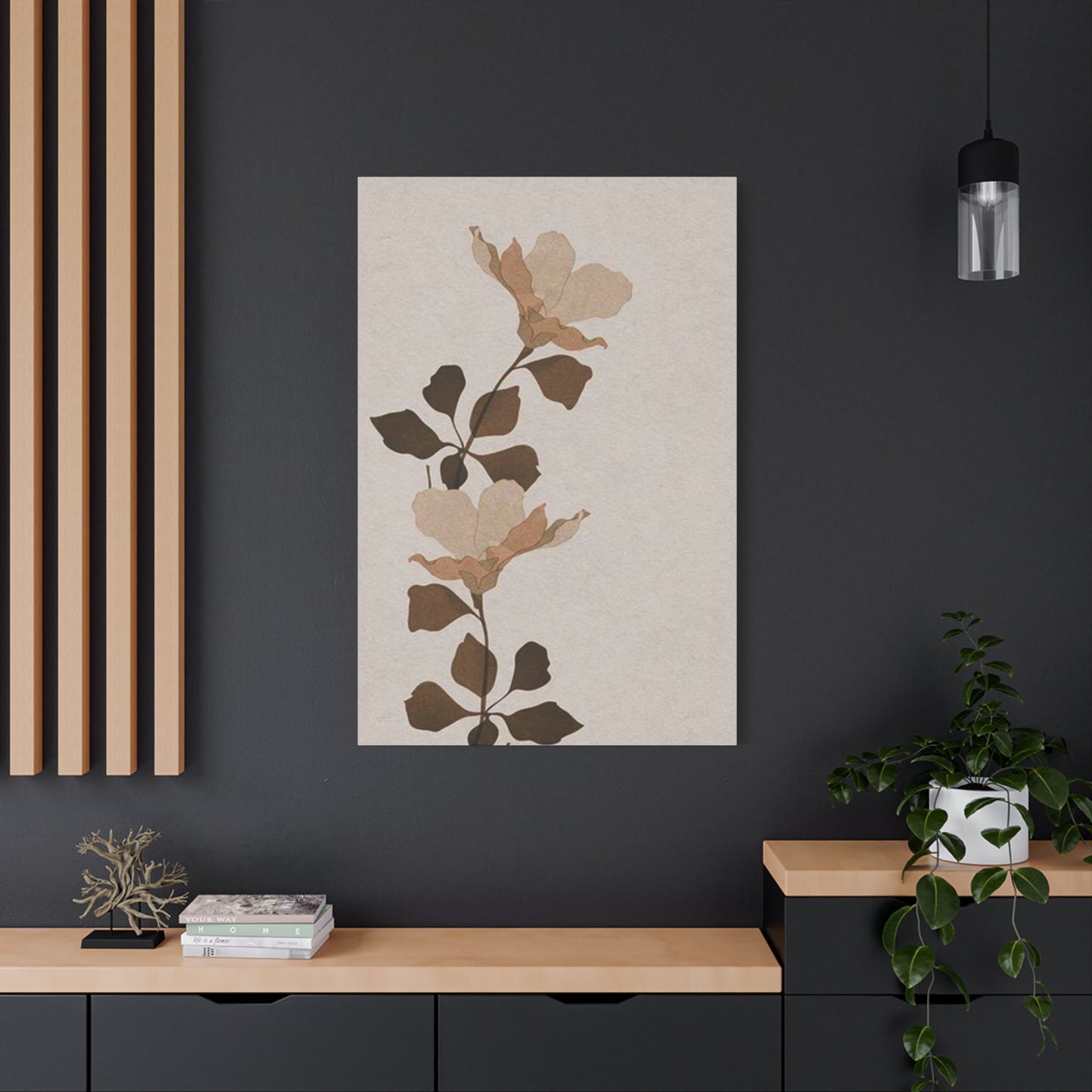Choosing the Right Canvas Size for Entryway Wall Art: Flower Stem Edition
The entrance of your home serves as the first impression for guests and sets the tone for your entire living environment. Among the various decorative elements that can enhance this crucial area, floral stem wall art has emerged as a sophisticated and timeless choice that effortlessly bridges the gap between natural beauty and contemporary aesthetics. This botanical approach to home decoration offers an elegant solution for homeowners seeking to create inviting, fresh, and visually appealing entryways that reflect their personal style while maintaining a connection to nature.
Floral stem wall art represents more than just decorative pieces; it embodies a design philosophy that celebrates the inherent beauty of botanical forms while offering versatility in application across different architectural styles and color schemes. Whether your entrance features modern minimalist elements or traditional design components, carefully selected stem artwork can complement and enhance the existing aesthetic while introducing organic shapes and natural inspiration that breathe life into otherwise sterile environments.
The growing popularity of botanical artwork stems from our innate connection to nature and the psychological benefits associated with incorporating natural elements into our living environments. Research consistently demonstrates that exposure to botanical imagery can reduce stress levels, improve mood, and create a sense of tranquility that begins the moment someone crosses your threshold. This makes floral stem wall art not just a decorative choice but a wellness-focused design decision that prioritizes the emotional well-being of both residents and visitors.
Botanical Entrance Transformation Through Strategic Stem Placement
Creating a memorable entrance experience requires careful consideration of how floral stem artwork interacts with the architectural elements of your entryway. The strategic placement of botanical prints or paintings featuring delicate stems can dramatically alter the perceived dimensions and atmosphere of even the most compact entrance areas. By understanding the principles of visual flow and focal point creation, homeowners can utilize stem artwork to guide visitors' eyes through the entrance while creating a sense of depth and sophistication.
The selection process for floral stem wall art should begin with a thorough assessment of your entrance's existing elements, including lighting conditions, wall colors, furniture placement, and traffic patterns. Natural light plays a crucial role in how botanical artwork appears throughout different times of the day, with certain stem designs appearing more vibrant during morning hours while others may showcase their beauty more effectively under artificial evening lighting. This temporal consideration ensures that your chosen pieces maintain their visual impact regardless of when guests arrive.
Color coordination between floral stem artwork and existing entrance elements requires a nuanced approach that considers both complementary and contrasting relationships. Monochromatic stem designs can create elegant, sophisticated atmospheres that emphasize form and texture over bold color statements. Alternatively, stem artwork featuring subtle color variations can introduce gentle warmth without overwhelming the entrance's existing color palette. The key lies in maintaining balance while allowing the botanical elements to serve as either accent pieces or focal points, depending on your desired aesthetic outcome.
Scale considerations become particularly important when selecting floral stem wall art for entrance areas, as inappropriate sizing can either overwhelm small entrances or appear insignificant in larger foyers. The relationship between artwork size and wall dimensions should create visual harmony while ensuring that the botanical elements maintain their intended impact. Multiple smaller stem pieces can be arranged in groupings to create visual interest and allow for flexible arrangement options, while larger single pieces can serve as dramatic focal points that immediately capture attention.
The framing and presentation of floral stem artwork significantly influences its integration within entrance environments. Modern minimalist frames can emphasize the clean lines and organic shapes of stem designs, while more ornate framing options can complement traditional entrance aesthetics. The choice between matted and unmatted presentations affects how the botanical elements interact with their surrounding wall areas, with matting often providing visual breathing room that prevents artwork from appearing cramped against busy wallpaper or textured surfaces.
Artistic Techniques for Showcasing Natural Stem Beauty
The artistic interpretation of floral stems in wall art encompasses a wide range of techniques and styles, each offering unique opportunities to enhance entrance environments. Watercolor representations of stems tend to create soft, ethereal atmospheres that work particularly well in entrances designed around comfort and tranquility. The translucent qualities of watercolor allow light to seemingly pass through the artwork, creating dynamic visual experiences that change subtly throughout the day as lighting conditions shift.
Photography-based floral stem wall art brings a different dimension to entrance decoration, offering realistic representations that can create striking contrasts with architectural elements. High-quality botanical photographs capture intricate details that might be impossible to achieve through traditional artistic mediums, including the delicate textures of petals, the subtle variations in stem coloring, and the interplay of light and shadow across plant surfaces. This photographic approach works particularly well in contemporary entrances where crisp, clear imagery complements modern design sensibilities.
Abstract interpretations of floral stems allow for greater creative freedom in both color selection and compositional arrangement. These artistic approaches can incorporate bold color combinations that might appear unnatural in realistic representations while maintaining the essential organic shapes that make stem artwork so appealing. Abstract stem art often works well in entrance environments where homeowners want to make bold artistic statements while maintaining connections to natural forms.
Mixed media approaches to floral stem wall art combine different artistic techniques and materials to create multi-dimensional pieces that add texture and visual interest to entrance walls. These pieces might incorporate pressed flowers or leaves alongside painted or drawn elements, creating layered compositions that reward closer inspection while maintaining visual impact from a distance. The textural variety in mixed media pieces can complement entrance environments that feature diverse material selections in their architectural or decorative elements.
Digital art and printing technologies have expanded the possibilities for floral stem wall art, allowing for precise color reproduction and the ability to customize sizing to match specific entrance requirements. Digital techniques can also facilitate the creation of series or collections of stem artwork that maintain consistent aesthetic themes while offering variations in composition or color emphasis. This approach works particularly well for homeowners who want to create cohesive botanical themes that extend beyond single statement pieces.
Seasonal Botanical Displays and Rotation Strategies
The dynamic nature of botanical subjects makes floral stem wall art particularly suitable for seasonal rotation strategies that keep entrance environments fresh and engaging throughout the year. Spring-themed stem artwork might emphasize new growth, delicate buds, and soft pastel colorations that reflect the renewal and optimism associated with the season. These pieces can incorporate imagery of emerging shoots, unfurling leaves, and the promise of blooming flowers that create anticipation and energy in entrance environments.
Summer representations of floral stems often showcase full blooms, vibrant colors, and lush foliage that reflect the abundance and vitality of the growing season. These pieces might feature bold color combinations, strong contrasts, and dynamic compositions that mirror the energetic atmosphere of summer months. The artwork selection during this season can lean toward more dramatic presentations that complement increased daylight hours and active lifestyle patterns.
Autumn-inspired floral stem wall art captures the transitional beauty of changing seasons through warm color palettes, textural emphasis, and compositions that highlight the natural aging processes of botanical subjects. These pieces might showcase seed heads, dried stems, or flowering plants in their late-season phases, creating contemplative atmospheres that encourage reflection and appreciation for natural cycles. The warm browns, deep oranges, and rich burgundies common in autumn stem artwork can create cozy, welcoming entrance environments during cooler months.
Winter botanical displays require careful consideration of how stem artwork can maintain visual interest when natural outdoor environments become dormant. Artwork featuring evergreen elements, winter-flowering plants, or architectural plant forms can provide continuity with natural themes while acknowledging seasonal changes. Alternatively, winter might be the ideal time to showcase dried flower arrangements or preserved botanical specimens that offer textural interest without relying on fresh colors.
The practical aspects of seasonal rotation include proper storage systems for artwork not currently displayed, consideration of wall mounting systems that facilitate easy changes, and planning rotation schedules that prevent damage from frequent handling. Homeowners might develop collections of stem artwork specifically designed for rotation, ensuring that each seasonal selection maintains consistent quality and aesthetic standards while offering fresh perspectives on botanical themes.
Color Psychology in Floral Stem Art Selection
The psychological impact of color in floral stem wall art extends far beyond simple aesthetic preferences, influencing mood, energy levels, and the overall atmosphere of entrance environments. Understanding color psychology principles can help homeowners make informed decisions about which stem artwork will best serve their desired emotional outcomes for both residents and visitors. Warm colors in botanical artwork, including reds, oranges, and yellows, tend to create energetic, welcoming atmospheres that encourage social interaction and positive emotional responses.
Cool color palettes in floral stem wall art, featuring blues, greens, and purples, often promote feelings of calm, tranquility, and sophistication that can be particularly effective in entrance areas where stress reduction is a priority. These colors work well in homes where the entrance serves as a transition zone between the busy external world and the peaceful internal environment. The natural association between green tones and plant life makes these colors particularly effective in botanical artwork, as they reinforce the connection to nature while providing psychological benefits associated with natural environments.
Neutral color schemes in stem artwork offer versatility and longevity that can accommodate changing decorative preferences over time. Monochromatic approaches using various shades of single colors can create sophisticated, gallery-like atmospheres that emphasize form and composition over bold color statements. These approaches work particularly well in entrance environments where the botanical artwork needs to complement existing color schemes without competing for attention with other decorative elements.
The intensity or saturation of colors in floral stem wall art affects how the pieces interact with lighting conditions and surrounding elements. Highly saturated colors tend to maintain their visual impact under various lighting conditions but may appear overwhelming in small entrance areas. Desaturated or muted colors can create subtle, sophisticated effects that work well in elegant or minimalist entrance designs while potentially appearing washed out under insufficient lighting conditions.
Color harmony principles guide the selection of floral stem artwork that will integrate successfully with existing entrance color schemes. Complementary color relationships can create dynamic, energetic effects that draw attention to botanical elements while analogous color schemes promote harmonious, peaceful atmospheres. Understanding these relationships helps homeowners select stem artwork that enhances rather than conflicts with their entrance environments.
Lighting Considerations for Botanical Wall Art
The relationship between lighting and floral stem wall art significantly influences how botanical elements appear and function within entrance environments. Natural lighting conditions vary throughout the day and across seasons, affecting color perception, contrast levels, and the overall visual impact of stem artwork. Entrances with abundant natural light offer opportunities to showcase artwork with subtle color variations and delicate details that might be lost in dimmer conditions, while entrances with limited natural light require careful consideration of artificial lighting solutions.
Artificial lighting systems designed to complement floral stem wall art should consider both functional and aesthetic requirements. Track lighting systems can provide focused illumination that highlights specific pieces while allowing for adjustment as artwork collections change or rotate seasonally. Picture lighting fixtures offer dedicated illumination for individual pieces but require careful selection to ensure that light distribution enhances rather than distorts the botanical imagery.
The color temperature of artificial lighting affects how floral stem artwork appears, with warm lighting tending to enhance reds, oranges, and yellows while potentially muting cooler colors. Cool lighting can emphasize blues, greens, and purples while potentially washing out warmer tones. LED lighting systems offer advantages in terms of energy efficiency and heat reduction while providing options for adjustable color temperature that can be modified to complement different pieces or seasonal rotations.
Avoiding glare and reflections becomes particularly important when illuminating framed botanical artwork, as these issues can obscure details and reduce visual impact. The angle of light sources, the type of glazing used on frames, and the surface treatments of walls all contribute to potential glare issues that require careful consideration during installation planning. Anti-reflective glazing options can minimize these problems while protecting artwork from UV damage that can fade colors over time.
Integration of lighting controls allows homeowners to adjust illumination levels based on time of day, seasonal conditions, or specific entertainment needs. Dimming systems provide flexibility for creating different atmospheric conditions while automated controls can ensure consistent presentation of botanical artwork without requiring daily attention. Smart lighting systems can even be programmed to adjust color temperature throughout the day to maintain optimal presentation conditions for floral stem wall art.
Maintenance and Preservation of Botanical Artwork
Proper maintenance and preservation techniques ensure that floral stem wall art maintains its visual impact and structural integrity over extended periods. Understanding the specific requirements of different artistic mediums helps homeowners develop appropriate care routines that protect their investments while maintaining the fresh, vibrant appearance that makes botanical artwork so appealing. Regular cleaning schedules should account for the accumulation of dust and environmental pollutants that can dull colors and obscure fine details in stem artwork.
Dusting techniques for framed botanical artwork require gentle approaches that avoid scratching glazing materials or disturbing artwork surfaces. Microfiber cloths and soft-bristled brushes work well for routine cleaning, while compressed air can help remove debris from detailed areas without physical contact. Cleaning solutions should be appropriate for the specific glazing materials used, with some treatments potentially damaging anti-reflective coatings or specialized glass types.
Environmental factors including humidity, temperature fluctuations, and exposure to direct sunlight can significantly impact the longevity of floral stem wall art. Entrance areas often experience greater environmental variations than other parts of homes due to frequent door openings and exposure to outdoor conditions. Monitoring and controlling these factors through appropriate HVAC systems and strategic placement can prevent damage while maintaining optimal viewing conditions.
UV protection becomes particularly important for botanical artwork displayed in entrances with significant natural light exposure. UV-filtering glazing materials can provide protection while maintaining optical clarity, though these options may require higher initial investments. Window films and treatments can also reduce UV exposure throughout entrance areas while providing additional benefits in terms of energy efficiency and privacy.
Professional conservation and restoration services may be necessary for valuable or irreplaceable botanical artwork that shows signs of deterioration. Understanding when to seek professional assistance can prevent further damage while ensuring that restoration efforts maintain the artistic integrity of floral stem pieces. Documentation of artwork condition and provenance can be valuable for insurance purposes and future conservation efforts.
Creating Botanical Art Collections and Themes
Developing cohesive collections of floral stem wall art allows homeowners to create sophisticated entrance environments that demonstrate curatorial sensibility while maintaining botanical themes. Collection development strategies might focus on specific plant species, particular artistic techniques, or consistent color palettes that create visual continuity while offering variety in composition and scale. These approaches require planning and patience as collections develop over time through careful selection and acquisition processes.
Thematic approaches to botanical art collections can reflect personal interests, geographic connections, or seasonal preferences that make entrance environments more meaningful and personalized. Collections focusing on native plant species can create connections to local ecosystems while supporting educational goals related to botanical awareness. Historic or heritage plant varieties might appeal to homeowners interested in traditional garden themes or family history connections.
Mixing artistic mediums within botanical collections can create visual interest while demonstrating appreciation for diverse artistic approaches to natural subjects. Combining watercolor paintings with botanical photographs, pressed flower arrangements with contemporary prints, or antique botanical illustrations with modern interpretations can create dynamic collections that reward continued examination while maintaining overall coherence through botanical themes.
Size and scale considerations become important when developing botanical art collections intended for entrance display. Varying artwork dimensions can create visual rhythm and prevent monotonous arrangements while ensuring that individual pieces maintain appropriate impact within the overall composition. Planning wall arrangements that accommodate future additions requires foresight and flexible mounting systems that can be adjusted as collections grow.
Investment strategies for botanical art collections should consider both aesthetic and financial factors that influence long-term satisfaction and value retention. Understanding the market for botanical artwork, recognizing quality indicators in different mediums, and developing relationships with reputable galleries or artists can enhance collection development while providing access to exclusive or limited-edition pieces that increase in value over time.
Modern Interpretations of Traditional Botanical Art
Contemporary artists continue to find inspiration in traditional botanical illustration while developing new approaches that reflect modern aesthetic sensibilities and technological capabilities. These modern interpretations of floral stem artwork offer homeowners opportunities to connect with botanical art traditions while displaying pieces that complement contemporary entrance designs and lifestyle preferences. Understanding the evolution of botanical art helps homeowners appreciate the historical context while making informed decisions about current and emerging trends.
Digital techniques have expanded the possibilities for botanical art creation, allowing artists to combine traditional drawing and painting skills with computer-based tools that offer precision, flexibility, and reproducibility impossible with conventional methods. These hybrid approaches can produce artwork that maintains the organic feel of hand-created pieces while incorporating contemporary design elements that appeal to modern sensibilities.
Minimalist interpretations of botanical themes emphasize essential forms and eliminate decorative elements that might compete with contemporary architectural features. These approaches often feature clean lines, simplified color palettes, and compositions that focus attention on the fundamental beauty of plant structures rather than elaborate decorative treatments. Such pieces work particularly well in entrance environments designed around modern or contemporary aesthetic principles.
Abstract botanical artwork pushes beyond realistic representation to explore color, form, and composition possibilities inspired by natural subjects. These pieces might use floral stems as starting points for artistic exploration that results in compositions bearing little resemblance to their botanical inspirations while maintaining emotional connections to natural forms. This approach offers opportunities for bold artistic statements that can serve as focal points in entrance designs.
Mixed media botanical art incorporates diverse materials and techniques to create multi-dimensional pieces that add texture and visual interest to wall displays. These approaches might combine traditional painting or drawing with found objects, pressed botanicals, or sculptural elements that extend beyond flat wall surfaces. The three-dimensional aspects of mixed media botanical art can create dramatic shadow effects that change throughout the day as lighting conditions shift.
Sustainable and Eco-Friendly Botanical Art Options
Environmental consciousness increasingly influences home decoration decisions, creating demand for botanical artwork that aligns with sustainable living principles. Eco-friendly options for floral stem wall art include pieces created using sustainable materials, non-toxic production processes, and artists who demonstrate commitment to environmental stewardship through their business practices and artistic choices.
Locally sourced botanical artwork reduces transportation environmental impacts while supporting regional artists and potentially featuring plant species familiar to local environments. These pieces might incorporate materials gathered from local ecosystems or represent flora native to specific geographic regions, creating connections between indoor decoration and outdoor natural environments while supporting local economic activity.
Recycled and upcycled materials offer creative possibilities for botanical artwork that demonstrates environmental responsibility while often resulting in unique pieces with interesting textural qualities. Artists working with reclaimed materials might incorporate salvaged paper, repurposed frames, or recycled mounting materials that reduce waste while creating distinctive artistic effects impossible with conventional new materials.
Digital printing technologies can reduce environmental impacts associated with traditional artistic processes while offering precision and consistency in botanical art reproduction. Eco-friendly printing options include water-based inks, sustainably sourced paper products, and energy-efficient production processes that minimize environmental footprints while maintaining high quality standards for finished artwork.
Preservation and restoration of existing botanical artwork represents another form of environmental stewardship that extends the useful life of artistic pieces while avoiding the environmental costs associated with producing new artwork. Techniques for maintaining and repairing botanical art can keep older pieces in good condition while preserving artistic and potential financial value accumulated over time.
Integration with Smart Home Technology
Modern entrance environments increasingly incorporate smart home technologies that can enhance the presentation and functionality of floral stem wall art. Automated lighting systems can adjust illumination throughout the day to maintain optimal viewing conditions while providing energy efficiency and convenience. These systems might include sensors that adjust lighting based on occupancy, natural light levels, or time of day preferences programmed by homeowners.
Digital display technologies offer possibilities for rotating collections of botanical artwork without physical handling or storage requirements. High-resolution displays can showcase digital collections of floral stem artwork that change according to seasonal preferences, special occasions, or random rotation schedules that keep entrance environments fresh and engaging. These systems require initial investments in quality display hardware but offer long-term flexibility and virtually unlimited collection possibilities.
Climate control integration becomes important for entrance areas where environmental conditions can affect both artwork preservation and viewing comfort. Smart HVAC systems can monitor and adjust temperature and humidity levels to protect botanical artwork while maintaining comfortable conditions for residents and visitors. These systems might include sensors that detect door openings and adjust climate control accordingly.
Security systems designed to protect valuable botanical artwork can include motion sensors, cameras, and alarm systems that monitor entrance areas where artwork is displayed. Smart security systems can provide remote monitoring capabilities while integrating with other home automation systems to provide comprehensive protection for both security and environmental control purposes.
Voice control integration allows homeowners to adjust lighting, climate control, and other environmental factors that affect botanical artwork presentation without physically interacting with control panels. These systems can be programmed with preset configurations optimized for artwork viewing, entertaining, or different times of day that automatically adjust multiple systems simultaneously.
Budget-Conscious Approaches to Botanical Entrance Art
Creating impressive botanical entrance displays does not require substantial financial investments, as numerous budget-conscious approaches can achieve sophisticated results through creative resource utilization and strategic selection processes. Understanding where to allocate limited budgets most effectively helps homeowners achieve maximum visual impact while staying within financial constraints that might otherwise limit botanical art acquisition.
DIY botanical artwork creation offers opportunities for personalized pieces that reflect individual tastes while developing artistic skills and saving money typically spent on professional artwork. Simple techniques including pressed flower arrangements, botanical photography, or watercolor painting can produce attractive pieces suitable for entrance display while providing creative satisfaction and learning experiences for household members.
Print reproduction options provide access to high-quality botanical imagery at significantly lower costs than original artwork, while technological advances in printing quality have made these options increasingly attractive for home decoration purposes. Online resources offer extensive collections of botanical prints that can be customized for specific size requirements and printed on various paper types to suit different aesthetic preferences and framing options.
Thrift store and estate sale hunting can yield unexpected botanical artwork discoveries at significantly reduced prices compared to gallery or retail purchases. These venues often include original pieces, vintage prints, and quality frames that can be repurposed for botanical displays while providing unique pieces unlikely to be found in conventional retail settings. Patience and regular searching increase the likelihood of finding exceptional pieces at budget-friendly prices.
Frame repurposing and refurbishment can significantly reduce costs associated with presenting botanical artwork while allowing for customization that perfectly matches entrance environments. Simple techniques including painting, staining, or adding decorative elements can transform inexpensive frames into custom pieces that appear much more expensive than their actual costs while providing perfect matches for specific decorative requirements.
Professional Installation and Display Techniques
Proper installation techniques ensure that floral stem wall art appears at its best while remaining secure and properly preserved within entrance environments. Professional installation approaches consider factors including wall composition, mounting hardware selection, spacing relationships, and long-term stability requirements that affect both appearance and safety over extended periods.
Wall preparation may be necessary before installing botanical artwork, particularly in older homes where wall surfaces might require attention before accepting mounting hardware. Assessment of wall composition helps determine appropriate mounting methods while identifying potential issues including electrical wiring, plumbing, or structural elements that could affect installation planning and execution.
Mounting hardware selection should account for artwork weight, frame construction, wall composition, and expected environmental conditions that could affect long-term stability. Professional-grade hanging systems offer advantages in terms of adjustability, weight capacity, and aesthetic appearance compared to basic hardware options that might be adequate for lightweight pieces but insufficient for substantial botanical artwork collections.
Spacing and arrangement planning becomes particularly important when installing multiple pieces as part of botanical collections or thematic displays. Professional approaches consider viewing distances, traffic patterns, lighting relationships, and visual balance principles that ensure optimal presentation while accommodating practical usage requirements for entrance areas.
Level and alignment techniques ensure professional-looking installations that demonstrate attention to detail and craftsmanship. Laser levels, measuring tools, and marking systems help achieve precise alignment that enhances the overall appearance of botanical displays while preventing the amateur appearance that can result from imprecise installation methods.
Botanical Art Trends and Future Directions
Contemporary trends in floral stem wall art reflect broader cultural interests in wellness, sustainability, and connection to natural environments while incorporating technological advances that expand artistic possibilities. Understanding current and emerging trends helps homeowners make selections that will remain relevant and appealing over time while potentially increasing in value as artistic movements develop and mature.
Biophilic design principles increasingly influence home decoration decisions, creating demand for botanical artwork that promotes connection to natural environments while supporting psychological and physiological wellbeing. This trend emphasizes authentic representation of natural forms while integrating with architectural and decorative elements that reinforce human connections to natural systems and processes.
Oversized botanical prints have gained popularity as statement pieces that create dramatic focal points in entrance environments while demonstrating confidence in botanical design themes. These large-scale pieces require careful consideration of space proportions and surrounding elements but can create impressive impacts that immediately establish botanical themes while serving as conversation starters for visitors.
Interactive and multi-sensory botanical art represents emerging directions that incorporate technology to create immersive experiences beyond traditional visual presentation. These approaches might include sound elements, lighting changes, or even scent diffusion that creates comprehensive sensory experiences inspired by botanical themes while demonstrating cutting-edge integration of art and technology.
Sustainable and locally focused botanical art continues growing as environmental consciousness influences decoration decisions. This trend emphasizes artists and materials with minimal environmental impacts while often featuring regional flora that creates connections between indoor decoration and local ecosystems that resonate with environmentally conscious homeowners.
Cultural and Historical Perspectives on Botanical Art
Botanical art traditions span cultures and centuries, offering rich historical contexts that can inform contemporary selection and appreciation of floral stem wall art. Understanding these cultural perspectives enhances enjoyment of botanical artwork while providing opportunities to connect with historical traditions and diverse cultural approaches to representing natural subjects through artistic mediums.
European botanical illustration traditions developed alongside scientific exploration and documentation efforts, resulting in precise, detailed representations that emphasized accuracy and educational value. These traditions influence contemporary botanical art through emphasis on technical skill, attention to detail, and respect for natural forms that continue to appeal to modern audiences seeking authentic connections to natural subjects.
Asian artistic traditions approach botanical subjects with different philosophical foundations that emphasize spiritual connections, symbolic meanings, and integration with broader artistic and cultural themes. These approaches offer alternative perspectives on representing floral stems and other botanical subjects while demonstrating different aesthetic principles that can complement contemporary entrance design approaches.
Indigenous artistic traditions from various cultures provide unique perspectives on botanical representation that often incorporate spiritual, medicinal, or ceremonial significance alongside aesthetic considerations. These approaches can offer inspiration for contemporary botanical artwork that seeks to move beyond purely decorative purposes toward more meaningful connections with natural subjects and cultural traditions.
Contemporary global influences create opportunities for cross-cultural artistic fusion that incorporates diverse traditional approaches within modern botanical art pieces. These hybrid approaches can result in unique artwork that demonstrates cultural awareness while creating fresh perspectives on botanical subjects that appeal to diverse audiences and aesthetic preferences.
Therapeutic and Wellness Benefits of Botanical Art
The psychological and physiological benefits associated with botanical imagery make floral stem wall art particularly valuable for entrance environments where stress reduction and positive mood enhancement can benefit both residents and visitors. Research in environmental psychology consistently demonstrates that exposure to natural imagery can reduce cortisol levels, lower blood pressure, and improve overall emotional wellbeing through mechanisms that operate both consciously and subconsciously.
Biophilic responses to botanical artwork occur naturally in most people, reflecting evolutionary adaptations that associate natural environments with safety, resources, and positive outcomes. These responses can be particularly beneficial in entrance areas where people transition between external stressors and internal sanctuary environments, making botanical art selection a wellness-focused design decision that prioritizes emotional health alongside aesthetic considerations.
Color therapy principles suggest that different colors in botanical artwork can influence mood and energy levels through both psychological associations and potential physiological responses. Green colors commonly found in stem artwork are associated with balance, growth, and tranquility, while floral colors can provide energy and optimism that create welcoming entrance environments supportive of positive emotional states.
Mindfulness and meditation practices often incorporate natural imagery to support focus and relaxation, making botanical artwork valuable for homeowners interested in creating entrance environments that promote mindful transitions between daily activities. The detailed, organic forms common in floral stem artwork provide opportunities for contemplative observation that can support stress reduction and mental clarity.
Seasonal affective responses to botanical imagery can help counteract depression and mood issues associated with limited natural light exposure during winter months or in entrance areas with minimal windows. Botanical artwork can provide psychological connections to natural growth cycles and seasonal changes while offering visual stimulation that supports mental health during challenging environmental conditions.
Technology Integration and Digital Botanical Displays
Advancing display technologies create new possibilities for incorporating botanical artwork into entrance environments through digital systems that offer flexibility, convenience, and access to virtually unlimited collections of floral stem imagery. These technological approaches complement traditional artwork while offering unique advantages including rotation capabilities, sizing flexibility, and integration with smart home systems.
High-resolution display panels designed for artwork presentation can showcase botanical imagery with detail and color accuracy that rivals traditional printed materials while offering the convenience of instant changes, seasonal rotations, and customization options impossible with physical artwork. These systems require initial investments in quality display hardware but provide long-term flexibility that can accommodate changing preferences and evolving collection interests.
Augmented reality applications can overlay digital botanical elements onto physical entrance environments, creating interactive experiences that blend virtual and physical elements while maintaining the flexibility to modify or update displays through software updates rather than physical artwork changes. These approaches appeal to technology-oriented homeowners while offering unique conversation starters and demonstration opportunities.
Smart frame technologies combine traditional frame appearances with digital display capabilities that can showcase botanical artwork collections while maintaining the familiar aesthetic of conventional frames. These hybrid approaches offer compromise solutions for homeowners interested in digital flexibility without completely abandoning traditional artwork presentation methods.
Projection mapping techniques can transform entrance walls into dynamic botanical displays that change throughout the day or respond to occupancy sensors, creating immersive environments that demonstrate cutting-edge technology integration while maintaining botanical themes. These systems require careful planning and professional installation but can create dramatic effects impossible with traditional artwork approaches.
Global Inspiration and Cultural Fusion in Botanical Art
Contemporary botanical artwork increasingly reflects global influences and cultural fusion that create opportunities for unique entrance environments celebrating diversity while maintaining connections to natural subjects. These cross-cultural approaches can result in artwork that demonstrates sophisticated global awareness while creating conversation starters and educational opportunities for household members and visitors.
Japanese minimalism influences in botanical art emphasize essential forms, negative space utilization, and subtle color palettes that create serene, contemplative atmospheres particularly suitable for entrance environments designed around stress reduction and mindful transitions. These approaches work well with contemporary architectural styles while offering timeless aesthetic principles that remain appealing across changing design trends.
Mediterranean botanical themes often incorporate warm color palettes, sun-drenched imagery, and plant species associated with coastal regions that can create welcoming, vacation-inspired entrance environments. These themes work particularly well in homes with architectural elements or decorative themes that reference Mediterranean cultures while providing optimistic, energetic atmospheres that encourage positive emotional responses.
Tropical botanical influences offer opportunities for bold color combinations, dramatic plant forms, and lush imagery that can create exotic, energetic entrance environments appealing to homeowners interested in maximalist design approaches. These themes require careful integration with existing decorative elements but can create striking, memorable entrance environments that make strong artistic statements.
Scandinavian design principles applied to botanical artwork emphasize functionality, simplicity, and connection to natural environments while maintaining sophistication and elegance through restrained color palettes and clean compositions. These approaches complement contemporary home designs while providing timeless aesthetic principles that age well and maintain appeal across changing fashion trends.
Investment Strategies for Botanical Art Collections
Building valuable collections of floral stem wall art requires understanding market factors, quality indicators, and investment strategies that balance aesthetic enjoyment with potential financial appreciation over time. Successful botanical art collecting involves research, patience, and development of relationships within artistic communities while maintaining focus on pieces that provide personal satisfaction regardless of financial considerations.
Artist research becomes crucial when investing in botanical artwork, as understanding artistic backgrounds, exhibition histories, and market recognition helps identify pieces with potential for appreciation while ensuring quality and authenticity. Emerging artists often offer opportunities for acquiring quality work at reasonable prices while established artists provide greater certainty regarding continued market interest and value retention.
Limited edition prints and original artwork represent different investment approaches with distinct advantages and considerations. Original pieces typically offer greater potential for appreciation but require higher initial investments and careful authentication processes. Limited edition prints provide access to quality botanical imagery from recognized artists at lower price points while offering some potential for appreciation based on edition sizes and artist recognition.
Documentation and provenance tracking become important for valuable botanical artwork, particularly when considering resale potential or insurance requirements. Maintaining records of purchase details, artist information, exhibition history, and condition assessments helps protect investments while facilitating future transactions or insurance claims that might become necessary over time.
Market timing considerations affect both acquisition and disposition decisions for botanical art investments. Understanding seasonal patterns, exhibition schedules, and economic factors that influence art markets helps optimize timing for purchases and sales while ensuring that investment decisions align with broader financial planning objectives and risk tolerance levels.
Conclusion
Floral stem wall art represents a sophisticated and versatile approach to entrance decoration that successfully bridges the gap between natural beauty and contemporary home design requirements. Throughout this comprehensive exploration, we have examined the multifaceted aspects of incorporating botanical artwork into entrance environments, from fundamental design principles and installation techniques to advanced considerations including technology integration, investment strategies, and wellness benefits.
The enduring appeal of botanical subjects in home decoration reflects our fundamental connection to natural environments and the psychological benefits associated with bringing nature indoors through artistic representation. Floral stem artwork specifically offers elegant solutions for homeowners seeking to create welcoming, sophisticated entrance environments that demonstrate aesthetic sensibility while providing positive emotional experiences for both residents and visitors. The organic forms, varied color possibilities, and timeless appeal of botanical subjects ensure that these artistic choices remain relevant and appealing across changing design trends and personal preference evolution.
Strategic selection and installation of floral stem wall art requires careful consideration of multiple factors including lighting conditions, color relationships, scale proportions, and integration with existing architectural and decorative elements. Success in creating effective botanical displays depends on understanding these relationships while maintaining focus on the desired emotional and aesthetic outcomes that entrance environments should provide. The investment in time and resources required for proper planning and execution yields long-term benefits in terms of daily enjoyment, guest impressions, and potential property value enhancement.
The therapeutic and wellness benefits associated with botanical imagery make floral stem wall art particularly valuable for entrance areas where stress reduction and positive mood enhancement can significantly impact quality of life. Research consistently demonstrates that exposure to natural imagery produces measurable physiological and psychological benefits that justify considering botanical artwork as wellness-focused investments rather than purely decorative choices. These benefits extend beyond immediate household members to include visitors who experience entrance environments designed around botanical themes.
Contemporary trends in botanical artwork reflect broader cultural interests in sustainability, wellness, and connection to natural environments while incorporating technological advances that expand artistic possibilities and presentation options. Understanding these trends helps homeowners make selections that remain current and appealing while potentially providing investment appreciation opportunities. The growing availability of eco-friendly, locally sourced, and digitally enhanced botanical artwork options ensures that environmentally conscious consumers can find choices that align with their values while achieving desired aesthetic outcomes.
The future of floral stem wall art in home decoration appears bright, with continued innovation in artistic techniques, display technologies, and sustainable production methods expanding possibilities for creative and meaningful entrance environments. As our understanding of the relationship between built environments and human wellbeing continues to develop, botanical artwork will likely play increasingly important roles in creating homes that support both aesthetic pleasure and psychological health. The timeless appeal of natural subjects ensures that investments in quality botanical artwork will continue providing enjoyment and value for years to come, making these choices both emotionally and financially sound decisions for discerning homeowners.


















